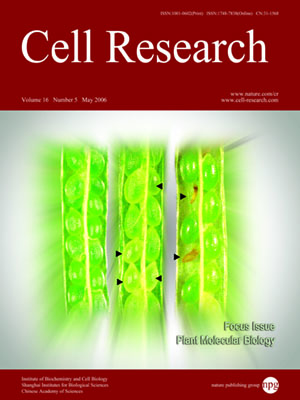
Volume 16, No 5, May 2006
ISSN: 1001-0602
EISSN: 1748-7838 2018
impact factor 17.848*
(Clarivate Analytics, 2019)
Volume 16 Issue 5, May 2006: 402-412
REVIEWS
Double-stranded DNA breaks and gene functions in recombination and meiosis
Wuxing Li, Hong Ma
1The Department of Biology, The Intercollege Graduate Degree Program in Plant Physiology, The Huck Institutes of the Life Sciences, The Pennsylvania State University, University Park, PA 16802, USA
Correspondence: Hong Ma(hxm16@psu.edu)
Meiotic prophase I is a long and complex phase. Homologous recombination is an important process that occurs between homologous chromosomes during meiotic prophase I. Formation of chiasmata, which hold homologous chromosomes together until the metaphase I to anaphase I transition, is critical for proper chromosome segregation. Recent studies have suggested that the SPO11 proteins have conserved functions in a number of organisms in generating sites of double-stranded DNA breaks (DSBs) that are thought to be the starting points of homologous recombination. Processing of these sites of DSBs requires the function of RecA homologs, such as RAD51, DMC1, and others, as suggested by mutant studies; thus the failure to repair these meiotic DSBs results in abnormal chromosomal alternations, leading to disrupted meiosis. Recent discoveries on the functions of these RecA homologs have improved the understanding of the mechanisms underlying meiotic homologous recombination.
Cell Research (2006) 16:402-412. doi:10.1038/sj.cr.7310052; published online 15 May 2006
FULL TEXT | PDF
Browse 2105


